I started my programming journey with python. Life was great and my optimism was at it’s peak. I made some projects with python within 2 weeks. It took around 2 months to make all my basics strong and I was ready to explore all those modules and libraries to make something big. Finally, when I got into college JAVA came in my life. And the rest is history. Today in this blog we will discuss about Python Benefits over Java and what were my experience with both of them.
Overview of Python vs Java
Alright,
let’s talk about Python and Java—two of the most popular programming languages.
If you’ve ever debated which one to learn or use for a project, you’re not alone.
I remember when I first started coding, I was overwhelmed by the endless “Python vs Java” debates online.
Some said Python was too slow, others claimed Java was outdated. So, I dug in and figured out the real deal.
I started with Python
Python: The “Get Things Done Fast” Language
Python is like that friend who just “gets it.”
Simple, clean, and straight to the point.
No weird syntax, no excessive rules—just code that looks like English.
If you’ve ever been frustrated by Java’s {} braces and semicolons, you’ll love Python’s indentation-based structure.
A simple “Hello, World!” in Python?
print("Hello, World!")
In one line, you’re done.
Java, on the other hand, makes you write a whole mini-essay just to do the same thing:
public class HelloWorld {
public static void main(String[] args) {
System.out.println("Hello, World!");
}
}
That’s six lines vs. one.
And this adds up! Python developers typically write 40% less code than Java developers for the same task
Moreover, Python is the most popular language in the world
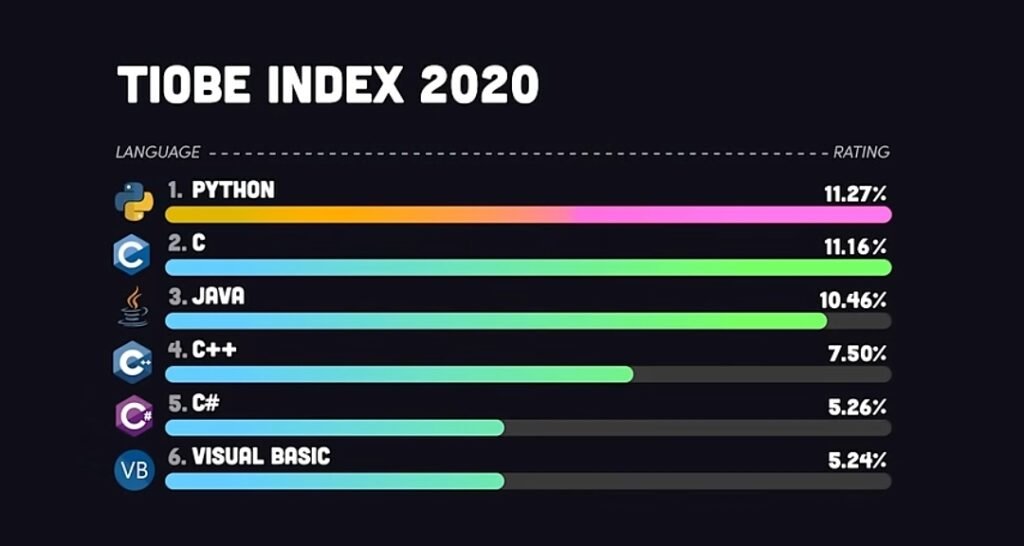
Java: The “Reliable Workhorse”
Now,
Java isn’t bad.
In fact, it’s a great actualy—especially for big applications, enterprise software, and Android development.
It’s strict, but that’s also its strength. Static typing prevents a lot of runtime errors, making it great for large-scale applications where reliability is crucial.
But here’s the problem: Java is verbose.
Writing code feels like filling out government paperwork—every little detail needs to be explicitly declared.
Want to define a simple variable? In Java, you must specify the type:
int number = 10;
In Python?
number = 10
No type declaration needed. This makes Python faster to write, easier to debug, and much friendlier for beginners.
🏆 Popularity & Industry Adoption
Python has been growing like crazy.
It’s currently the #1 programming language in the world according to the TIOBE Index (2024), surpassing Java.
Companies like Google, Netflix, and NASA use Python for AI, automation, and backend development.
Java, meanwhile, dominates in enterprise software, banking applications, and Android apps—big companies like Amazon, LinkedIn, and Uber rely on it.
But here’s a fun fact: 60% of developers who start with Java eventually switch to Python (Source: Stack Overflow Developer Survey).
Why?
Because Python just feels faster and more intuitive.
🧠 The Learning Curve: Python Wins
I remember the first time I tried Java (since my college forced me)—I spent more time fixing semicolon errors than actually coding.
It felt frustrating!
Python was so beginner-friendly that even a 10-year-old could pick it up in a few weeks (some schools actually teach it in 5th grade!). And I actually missed Python while coding Java back in college.
Java has a steep learning curve.
Concepts like object-oriented programming, interfaces, and memory management can feel overwhelming. Python lets you start small, then go deep when needed.
This is why it’s the top choice for beginners, data scientists, and rapid prototyping.
Application in Different fields: Python vs Java
Here’s a table comparing Python and Java use cases side by side:
| Python | Java |
|---|---|
| Python + Django/Flask/FastAPI = Web Development | Java + Spring Boot = Web Development |
| Python + Pandas/NumPy = Data Analysis | Java + Apache Hadoop = Distributed Computing |
| Python + Matplotlib/Seaborn/Plotly = Data Visualization | Java + Apache POI = Office Document Processing |
| Python + TensorFlow/PyTorch/Keras = Machine Learning | Java + TensorFlow Java = Machine Learning |
| Python + Scikit-learn = Traditional ML | Java + Weka = Data Mining and ML |
| Python + OpenCV = Computer Vision | Java + OpenCV = Computer Vision |
| Python + BeautifulSoup/Scrapy = Web Scraping | Java + Jsoup = Web Scraping |
| Python + SQLAlchemy/Psycopg2 = Database Management | Java + Hibernate = Database Management |
| Python + PySpark/Dask = Big Data Processing | Java + Apache Spark = Big Data Processing |
| Python + Jupyter Notebooks = Interactive Data Science | Java + Jupyter Kernels = Interactive Computing |
| Python + Pygame = Game Development | Java + LibGDX = Game Development |
| Python + Kivy/PyQT = Desktop App Development | Java + JavaFX = Desktop Application Development |
| Python + Selenium = Automated Testing | Java + Selenium = Automated Testing |
| Python + Pytest/unittest = Unit Testing | Java + JUnit = Unit Testing |
| Python + NetworkX = Network Graph Analysis | Java + Neo4j = Graph Database Management |
| Python + NLTK/Spacy = Natural Language Processing | Java + OpenNLP = Natural Language Processing |
| Python + HuggingFace Transformers = Advanced NLP | Java + Deeplearning4j = Advanced NLP |
| Python + Bokeh/Altair = Interactive Visualization | Java + Vaadin = Interactive Web Apps |
| Python + Twilio/Flask-Mail = Email Automation | Java + JavaMail = Email Automation |
| Python + Ansible = Infrastructure Automation | Java + Jenkins = Continuous Integration |
| Python + Fabric/Paramiko = Remote Automation | Java + Apache Camel = Enterprise Integration |
| Python + PyInstaller = Packaging Apps | Java + Maven/Gradle = Build Automation |
| Python + PIL/Pillow = Image Processing | Java + ImageJ = Image Processing |
| Python + PyPDF2/Fitz (PyMuPDF) = PDF Processing | Java + PDFBox/iText = PDF Processing |
| Python + OpenAI API = AI Content Creation | Java + OpenAI API = AI Content Creation |
| Python + Asyncio/Trio = Async Programming | Java + CompletableFuture = Async Programming |
| Python + Cryptography/Hashlib = Security and Encryption | Java + Java Cryptography Extension (JCE) = Security and Encryption |
| Python + Streamlit/Dash = Data Apps | Java + Jaspersoft Studio = Reporting Tools |
| Python + FastAPI = Building Fast APIs | Java + RESTEasy = REST API Development |
Core Benefits of Python Over Java
Ever found yourself staring at Java code, wondering why it takes ten lines to do something that Python pulls off in two?
I’ve been there.
When I first returned from Java to Python, it felt like trading a clunky old typewriter for a sleek MacBook.
Python is just faster, simpler, and more fun.
Let’s break down why it outshines Java in many cases.
Simplicity & Readability
Java:
public class Hello { public static void main(String[] args) { System.out.println("Hello, World!"); } }
Python:
print("Hello, World!")
This is not just a one-off example.
Python reduces boilerplate code across the board.
No public static void main(), no curly braces, no semicolons—just clean, indentation-based readability. It’s like writing English instead of programming jargon.
Faster Development & Prototyping
I remember working on a machine learning project with a tight deadline.
A friend (a die-hard Java fan) took two days just to set up the structure.
Meanwhile, I had a working Python prototype in hours. Fewer lines of code = faster testing and debugging.
📊 Stat Fact: Python requires 3-5 times less code than Java for most tasks.
Rich Libraries & Ecosystem
Java is solid for enterprise applications, but Python dominates AI, ML, and data science.
Want to work with AI?
TensorFlow and PyTorch are Python-based. Need data visualization?
Matplotlib, Seaborn, and Plotly have your back. Automation?
Selenium, BeautifulSoup, and Requests make web scraping a breeze.
Java just doesn’t have the same depth of specialized libraries.
You can do AI in Java (like with Deeplearning4j),
but why struggle when Python makes it effortless?
Easy to Learn & Use
I’ve mentored junior developers, and the ones who start with Python grasp coding concepts way faster than those who start with Java. Why?
- No complex syntax.
- No manual memory management.
- No “WTF moments” with verbose class structures.
Even Guido van Rossum (Python’s creator) once said the goal was to make Python as simple as possible without sacrificing power. And guess what? He nailed it.
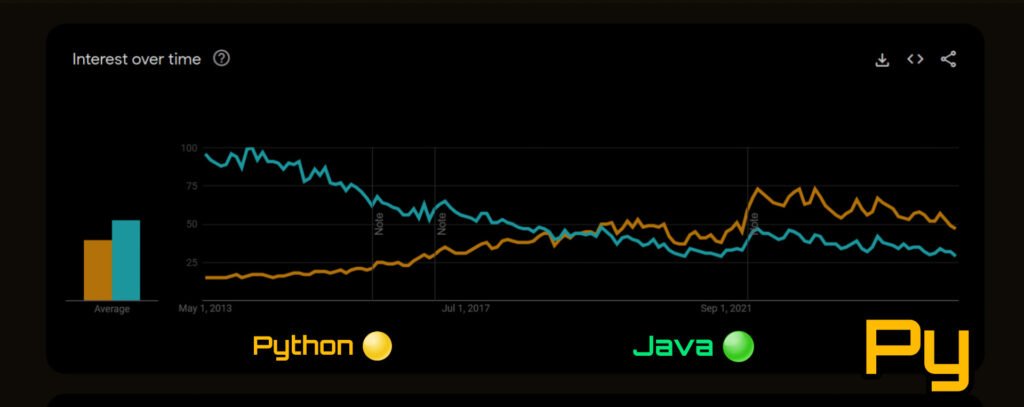
Dynamic Typing = Flexibility (But Also a Double-Edged Sword)
Python’s dynamic typing means you can write:
x = "Hello"
x = 42 # No errors!
In Java? No chance. You have to define types upfront (int x = 42;). This makes Python more flexible but also riskier—a tiny typo can lead to weird runtime errors. That’s why big projects in Python still use type hinting (x: int = 42).
Great for Automation & Scripting
Ever wanted to automate boring tasks? Python makes it super easy. I once needed to extract data from 500+ PDFs for a client. Instead of manually opening each one, I wrote a Python script in 20 minutes using PyPDF2. Java can do this too, but the setup alone takes longer than writing the actual script in Python.
If you’re building enterprise software, Java is rock solid.
But for fast development, data science, AI, automation, and web apps, Python crushes it.
It’s easier to learn, more concise, and has better libraries for modern development.
Direct Comparison: Python vs Java
If you’re stuck choosing between Python and Java, let’s break it down with real-world insights, stats, and a little storytelling. I remember when I first switched from Java to Python—let’s just say, it felt like I went from driving a manual car to a self-driving Tesla 🚀. Here’s why:
Syntax & Code Length: Python Keeps It Short and Sweet
- Java: A simple “Hello, World!” takes 5+ lines. You need to define a class, a main method, and then finally print the message.
- Python: One line does the job—just
print("Hello, World!"). Less typing, fewer bugs, and more time for coffee. ☕
A 2020 study by Stack Overflow found that Python developers write 3x less code than Java developers for the same functionality.
That’s a huge time-saver when you’re working under tight deadlines.
Development Speed: Python Wins for Quick Prototyping
- Java: You must compile the code before running it. Every single time.
- Python: Just write and run! It’s interpreted, meaning you see results instantly.
I once worked on a startup project with tight deadlines, and Python’s flexibility helped me test ideas instantly.
Meanwhile, my teammate using Java?
He spent half his time waiting for code to compile. If you’re building an MVP or working in an agile environment, Python is the MVP of MVPs.
Library & Community Support: Python Dominates in AI & ML
- Python rules in AI, data science, and automation. Libraries like TensorFlow, Pandas, NumPy, and Scikit-learn power everything from chatbots to self-driving cars.
- Java is strong in enterprise-level applications, but its AI/ML support is weak in comparison. Even Google and Netflix rely on Python for machine learning models.
💡 Fun fact: Over 90% of machine learning engineers prefer Python over Java for AI (Source: Kaggle ML & DS Survey, 2023).
📉 Learning Curve: Python is a Beginner’s Best Friend
- Java: Strict rules. More boilerplate. Takes time to master.
- Python: Simple, readable, and intuitive. Even a 10-year-old can learn it.
That’s why Python is the #1 language taught in universities today (IEEE Spectrum, 2023). I personally learned Python in weeks after struggling with Java for months.
⚡ Performance & Speed: Java Wins… But Does It Matter?
Yes, Java runs faster because it’s compiled. Python is slower, but in most real-world cases, the difference is negligible. Plus, with Cython and PyPy, Python can be optimized to run nearly as fast as Java.
If you’re building a trading platform or a game engine, go with Java. If you want to build a SaaS product, automate tasks, or crunch data, Python is the better bet.
So When Should You Pick Python?
✅ Choose Python if:
- You want faster development & easier syntax.
- You work with data science, AI, automation, or web apps.
- You’re a beginner or want to test ideas quickly.
❌ Avoid Python if:
- You need high-performance applications (banking, real-time trading, gaming).
- You prefer strict typing & structured programming.
I’d say, if coding were cooking,
Java would be like a Michelin-star chef’s recipe—precise but time-consuming.
Python?
It’s like a quick, delicious meal you can whip up effortlessly. 🍜
Use Cases Where Python wins
If you’ve ever tried building something quickly—whether it’s a small automation script, a web scraper, or even a full-fledged ML model—you know the struggle of choosing the right tool.
I’ve personally spent hours debating between Python and Java, and let me tell you—when speed, flexibility, and ease matter, Python wins hands down.
1️⃣ Data Science & Machine Learning: The Undisputed King 👑
Ever wondered why Google, Netflix, and Facebook use Python for their AI models?
Simple—
it’s fast to develop, and the ecosystem is insanely powerful.
Libraries like TensorFlow, Scikit-learn, and Pandas make Python the go-to language for data science.
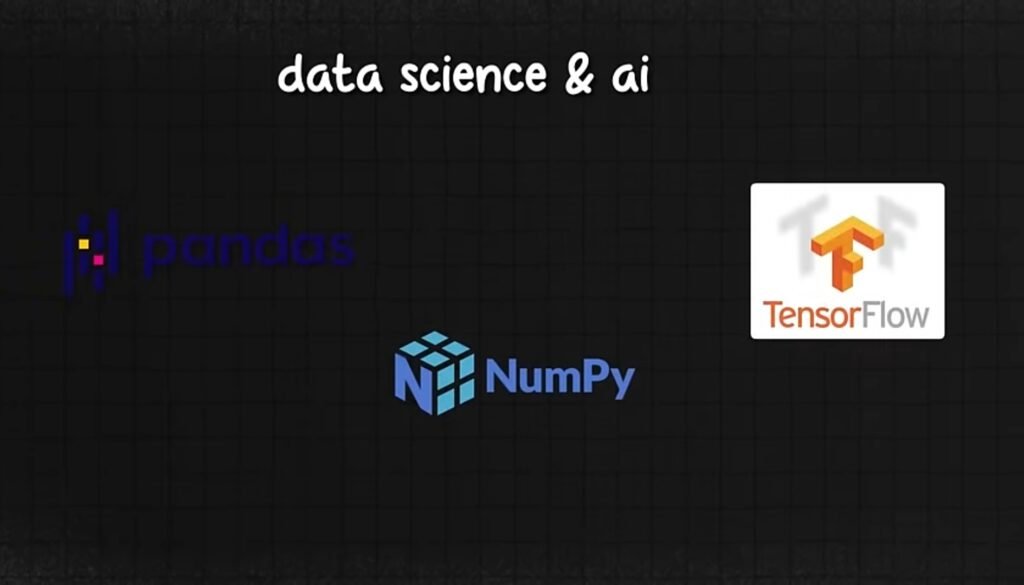
💡 Stat: A 2023 Kaggle survey found that 83% of data scientists prefer Python for ML, compared to just 15% using Java. (Source)
I once tried building a simple sentiment analysis tool in Java, thinking,
Hey, Java is faster, right?
Well, after 2 days of wrestling with complex dependencies and verbose code, I returned to Python. Within two hours, I had a working model using NLTK and Pandas.
Lesson learned: Python is unbeatable for AI & data science.
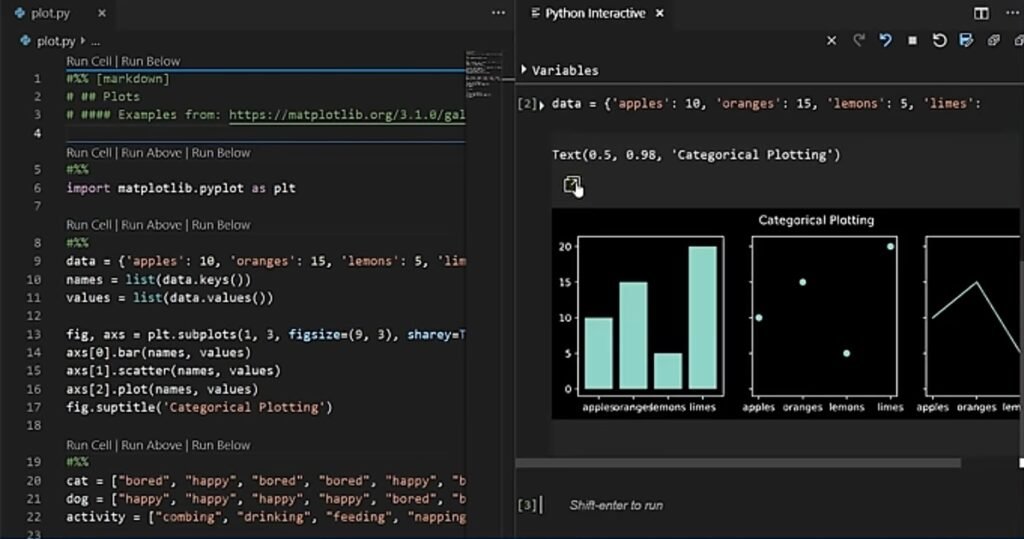
2️⃣ Web Scripting & Automation: Save Hours of Work!
If you’re still doing repetitive tasks manually, stop.
Python’s automation capabilities can save hours of work.
Need to scrape websites? Use BeautifulSoup or Scrapy.
Want to automate Excel reports? Try Pandas and OpenPyXL.
Sending emails in bulk? Python’s smtplib has you covered.
💡 Fact: A study by McKinsey shows that automation can save up to 45% of repetitive work hours in a company. (Source)
I once had to scrape product data for a client.
Java’s JSoup was an option, but handling dynamic pages with JavaScript?
A nightmare.
In Python, Selenium handled it effortlessly, and I had the data in 30 minutes.
Why struggle when Python makes life easy?
3️⃣ Rapid MVP Development: Turn Ideas into Reality Faster
Imagine you have a startup idea 💡—you need an MVP (Minimum Viable Product) fast to test the market.
Would you rather:
✅ Build a working prototype in a week using Django or Flask (Python)
❌ Spend months writing boilerplate in Java?
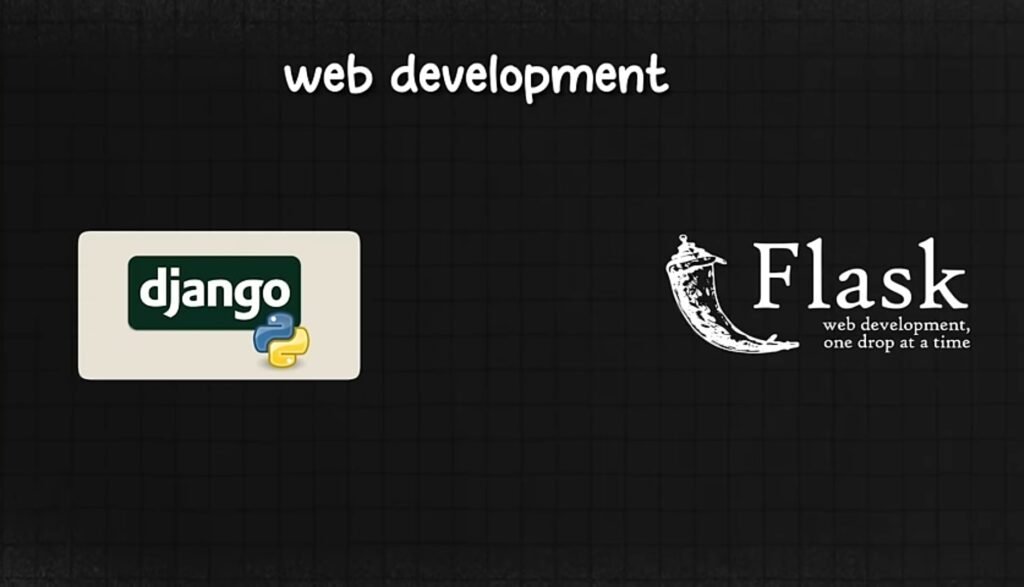
💡 Example: Dropbox was originally built with Python, allowing it to launch fast and scale later. (Source)
I once built a basic task manager app—in Java, setting up Spring Boot felt like a full-time job. In Python, Flask had me running in a few hours. When speed matters, Python delivers.
4️⃣ Startups & Small Projects: Flexibility Over Performance
Startups care about time to market, not raw performance.
Unless you’re building a high-frequency trading system, the slight speed advantage of Java doesn’t matter.
Python lets you pivot fast, test ideas, and iterate, which is why most early-stage companies prefer it.
💡 Fact: According to Stack Overflow’s 2023 Developer Survey, Python ranks #1 for startups due to its rapid development capabilities. (Source)
That’s not to say Python is perfect. For large-scale applications, Java’s strict typing and multi-threading are a blessing, preventing runtime errors. But for 90% of projects, Python’s simplicity outweighs the downsides.
Conclusion
So what to choose? It Depends on Your Goals.
- Just starting out? Python will get you coding way faster.
- Want to build the next AI tool? Choose Python.
- Building a massive banking system? Java might be better.
- Want to build a machine learning model, automate tasks, or develop a web app quickly? Python is your best friend.
- Need a scalable, high-performance system or enterprise-level application? Java might be the better option.
If you need speed in development, automation, or AI, Python is a no-brainer. Sure, Java is great for banking systems and enterprise apps, but for modern projects, Python’s ease and flexibility win. 🚀
And hey, if you really want to future-proof your skills? Learn both. 🚀



